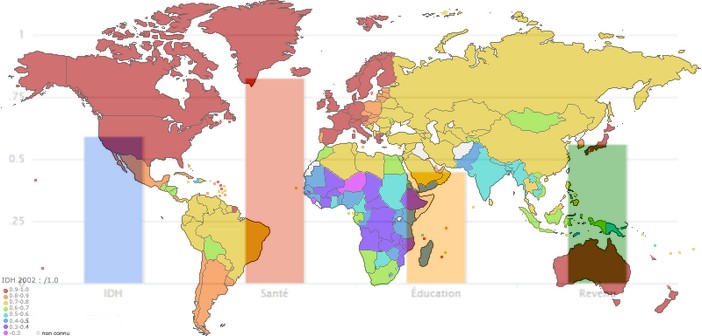For supporters of France “bashing,” this is not good news.
The government has made public the new indicators of what could be called the “overall well-being” of the country, indicators that go beyond simple GDP but take into account other parameters.
In fact, Gross Domestic Product (GDP) does not reflect economic activity because it emphasizes quantity, not quality.
Main criticism? It only takes into account market transactions, not non-monetary activities like volunteer work or domestic work, which contribute to the residents’ quality of life. Moreover, it does not integrate the often harmful impact of production activities on society.
To circumvent these different shortcomings, several “alternative” instruments have been developed in recent years, taking into account social, cultural, or environmental dimensions in their evaluation of wealth.
Among them is the one by Indian economist Amartya Sen, Nobel Prize winner in 1998 and the father of the Human Development Index (HDI). This tool, created in 1990 for the United Nations Development Programme, combines three criteria: income per capita, education, and life expectancy.
In the 2000s, several dozen additional indicators emerged, such as the Index of Economic Well-being (IEWB) or the Better Life Index (BLI).
Not to mention the famous “Gross National Happiness” (GNH) developed by the small kingdom of Bhutan.
The ten alternative indicators presented by the government were adopted under the law on new wealth indicators, passed in spring 2015. They will be used to measure the state of France’s health each year, beyond the variations in GDP,
France is above the European average for 6 out of 10 indicators, which is encouraging, and progress is observed, particularly in reducing inequalities,
According to this report, France is above the European average when it comes to fighting “poverty in living conditions,” measuring situations of enduring economic difficulty. In 2014, this affected 12% of the French, compared to 19.6% on average in the EU.
As for the “income gap,” measuring the difference between the income of the wealthiest 20% of households and the poorest 20%, France also performs better than its partners, with a gap of 4.3 compared to 5 in the rest of the EU.
The country also achieves good results in terms of “early school leaving” (8.5% of 18-25 year-olds compared to 11.1% in the EU) and “healthy life expectancy,” which evaluates the number of years a person can expect to live in good health (64.4 years for women and 63 years for men).
However, the country achieves less favorable results in certain areas: regarding debt — both in terms of public debt (96% of GDP compared to 87% in the EU at the end of 2014) and company debt (81%, compared to 48% in Germany) — and also in soil conservation with 5.8% of land being artificialized (paved or built-up) compared to 4.6% on average in the EU.
In terms of “research effort,” which measures the share of domestic spending devoted to research and development, the country is above the European average (2.3% compared to 1.9%), but it lags behind Germany and Austria (2.9%), or the Nordic countries, which exceed 3%.


